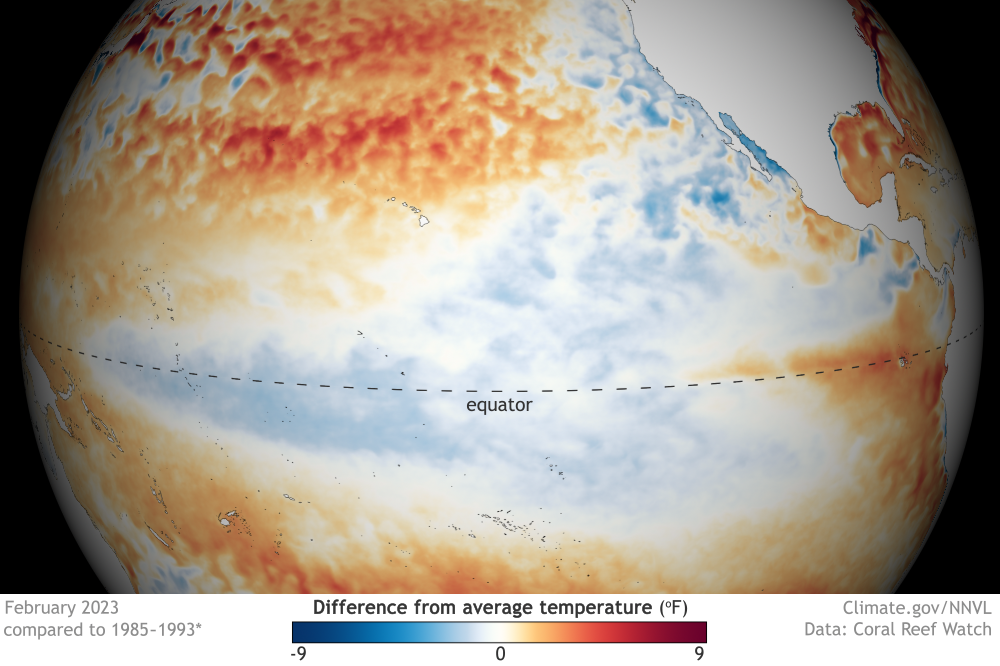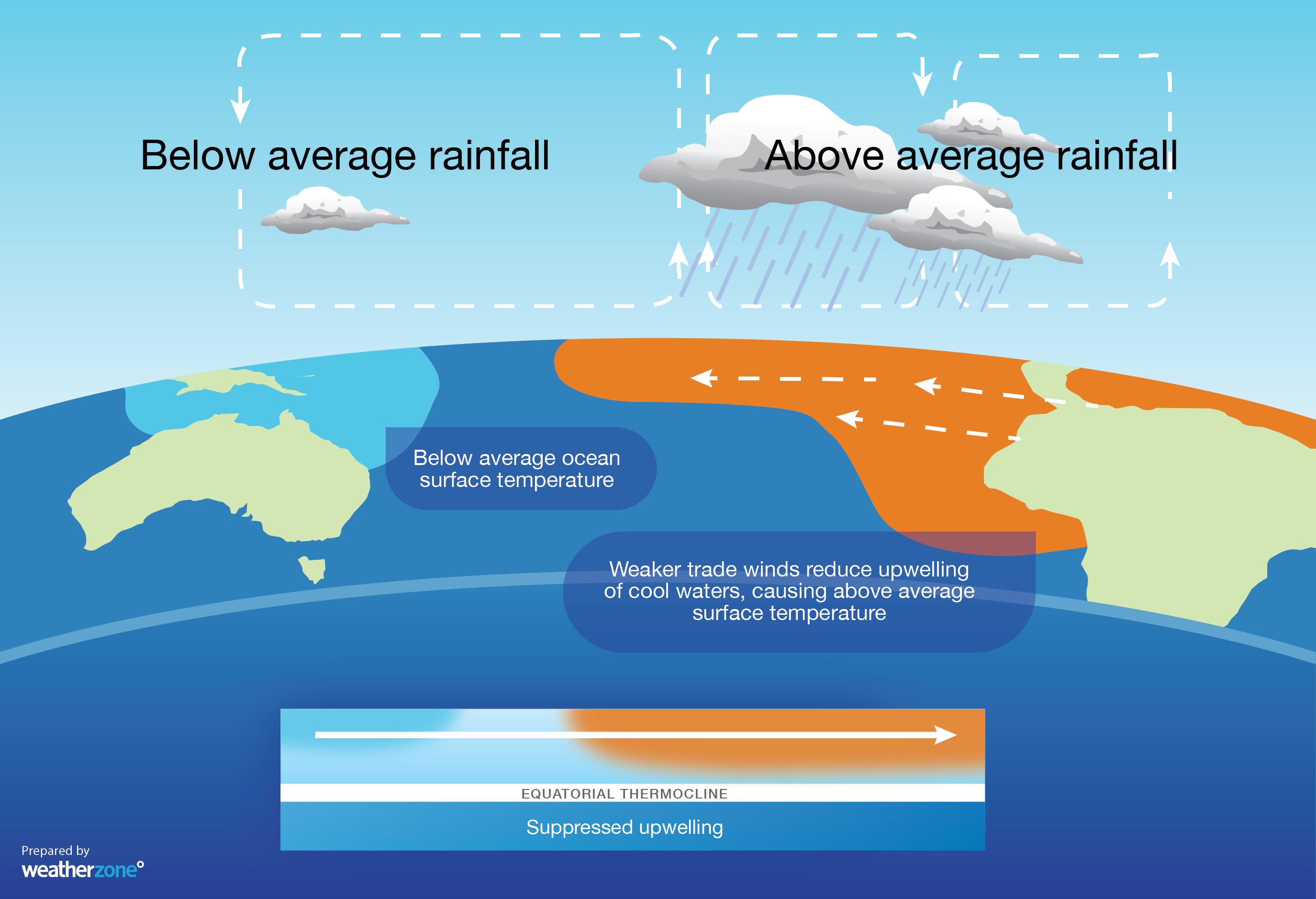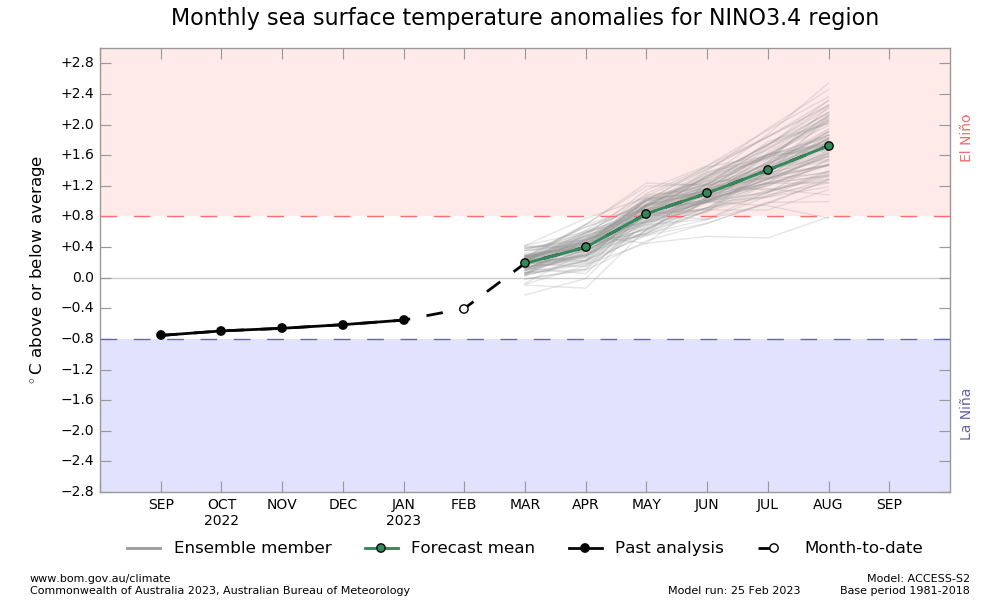La Nina is over, declares US Climate Prediction Center
The U.S. Climate Prediction Center (CPC) has declared that the 2022/23 La Niña has ended, paving the way for a return of drier and warmer weather in Australia.
While Australia’s Bureau of Meteorology is yet to officially announce the end of La Niña, the U.S. CPC issued a statement overnight declaring that “La Niña has ended and ENSO-neutral conditions are expected to continue through the Northern Hemisphere spring and early summer 2023.”
With the Bureau expected to follow suite with a similar declaration later this month, this ends La Niña’s three-year reign that produced record-breaking rain and flooding parts of Australia between 2020 and 2023.

Image: Monthly sea surface temperature anomaly in the equatorial Pacific Ocean during February 2023, showing a neutral pattern (neither La Nina nor El Niño). Source: NOAA
The end of La Niña will undoubtedly come as welcome news to people in Australia that were adversely impacted by rain, flooding and mould in the last few years. But with the door now closing on La Niña, all eyes are looking to what will happen next in the Pacific Ocean.
Following La Niña, the Pacific is expected to remain in a neutral state through the rest of the Southern Hemisphere’s autumn. This means the Pacific Ocean will not be in a La Niña or El Niño phase and should not have a strong influence on the weather in Australia or any other parts of the world.
Looking further ahead, seasonal forecast models suggest that the Pacific Ocean will either remain in a neutral state, or transition into El Niño, during the Southern Hemisphere winter or spring.
If neutral conditions persist into the second half of 2023, this will mean the Pacific continues to have little influence on Australia’s weather.
But if the Pacific does flip to El Niño later this year, it will increase the likelihood of below average rain, and above average temperatures, in large areas of Australia. This transition to a warmer and drier climate would increase the risk of grass and bushfires, and possibly cause the early stages of drought.

Image: Typical impacts of El Niño.
The latest official outlook from the U.S. CPC and Columbia University’s International Research Institute for Climate and Society (IRI), which was published on March 9, gives roughly equal chances of El Niño and neutral conditions between June and August. However, by August to October, their outlook increases the probability of El Niño to 61%, with neutral conditions dipping to 35% and La Niña at 4%.

Image: Latest CPC/IRI ENSO outlook based on Nino3.4 temperature, showing the probability of La Niña (blue), El Niño (red) and neutral conditions (grey) during the next nine overlapping three-month periods. Source: CPC/IRI
The Bureau of Meteorology’s model is more bullish in its current outlook, with a 71% chance of El Niño (29% neutral) in May and a 100% chance of El Niño by August.

Image: Latest Bureau of Meteorology’s latest ENSO outlook based on Niño-3.4 temperature, showing a strong trend towards El Niño conditions in the middle of 2023.
While these outlooks both hint at the potential for a quick transition from La Niña to El Niño in 2023, it is important to point out that El Niño and La Niña forecasts are less reliable at this time of year and should be treated with caution. These predictions usually become more trustworthy after the Southern Hemisphere’s autumn, when we get on the other side of the model’s ‘autumn predictability barrier’.
For now, we can say farewell to La Niña and be confident that neutral conditions will persist in the Pacific Ocean for the next few months. We will need to keep a close eye on state of the Pacific in the next few months to assess the potential for El Niño later this year.